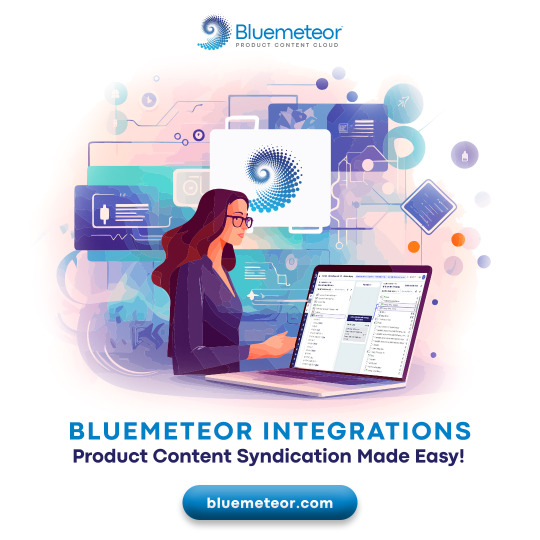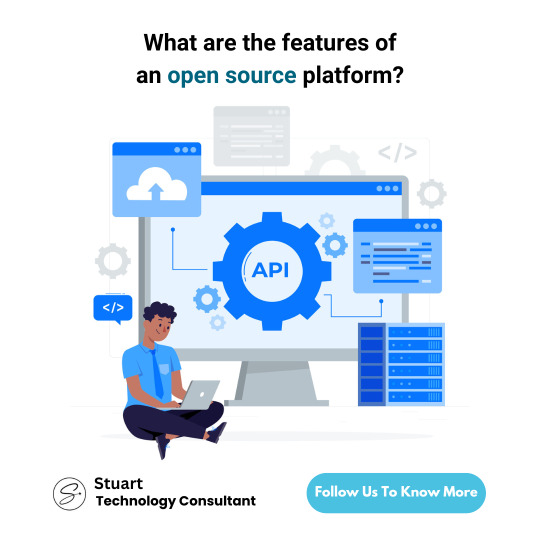#vendor portal software
Explore tagged Tumblr posts
Text
Maximize Efficiency and Collaboration with Aixtor's Supplier Portal Solutions
Supplier Portal Solutions, Vendor Portal Software, Supplier and Vendor Portal Solutions
Aixtor’s Supplier Portal Solutions empower businesses to streamline procurement processes, enhance collaboration, and centralize critical data. With automated workflows, seamless ERP integration, and advanced analytics, our platform eliminates inefficiencies, reduces manual tasks, and ensures compliance.
Gain complete visibility into supplier performance, manage contracts effectively, and foster stronger supplier relationships through a centralized database and secure communication tools. By automating order management, invoicing, and onboarding processes, Aixtor’s portal enables cost savings, improves decision-making, and optimizes procurement practices.
#Supplier Portal Solutions#aixtor technologies#Vendor Portal Software#Supplier and Vendor Portal Solutions
0 notes
Text
Vendor Risk Management: Safeguarding Your Organization from Third-Party Risks
In today’s interconnected business environment, organizations increasingly rely on third-party vendors for a range of services and solutions. While this collaboration offers numerous benefits, it also introduces a spectrum of risks that can threaten the organization’s operations, reputation, and compliance standing. Vendor Risk Management (VRM) is a structured and systematic approach designed to…
#vendor#vendor management#vendor management platform#vendor management software#vendor management solutions#vendor management tool#vendor portal software#vendor software#vms companies#vms system#vms vendor management system
0 notes
Text
Boost Vendor Management with a Top Enterprise Portal
In today’s competitive business environment, managing vendor relationships efficiently is more critical than ever. A well-organized and strategic approach to vendor management can significantly reduce procurement costs, improve compliance, and enhance operational efficiency.
This is where a top enterprise vendor portal backed by powerful vendor management software plays a transformative role.
Why Vendor Management Matters?
Vendors are a vital extension of your business. They provide essential goods and services that directly impact your delivery timelines, customer satisfaction, and bottom line. However, manual vendor processes often lead to inefficiencies such as delayed approvals, poor communication, invoice errors, and lack of visibility.
To overcome these challenges, organizations are turning to smart solutions like enterprise-grade vendor portals. These platforms centralize and automate vendor-related tasks—right from onboarding and purchase order management to payments and performance tracking.
What Is an Enterprise Vendor Portal?
An enterprise vendor portal is a digital platform that allows companies to collaborate with their vendors in real time. It acts as a single source of truth for all vendor interactions, ensuring transparency, accountability, and better decision-making.
A robust vendor portal powered by advanced vendor management software enables vendors to self-serve—update profiles, track orders, upload invoices, and view payment status—while allowing procurement teams to streamline and monitor the entire lifecycle efficiently.
How inoday Elevates Vendor Management?
When it comes to implementing an enterprise vendor portal, inoday stands out as a trusted and experienced technology partner. As a certified Oracle NetSuite implementation partner, inoday delivers tailor-made solutions that integrate seamlessly with your ERP system.
Here’s how inoday’s vendor portal enhances vendor management:
1. Centralized Data & Communication
The portal acts as a unified interface for managing all vendor information, purchase orders, shipment details, and payment records. This eliminates fragmented communication and ensures all stakeholders are aligned.
2. Automated Workflows
From PO approvals to invoice matching, inoday’s solution automates routine tasks, reducing manual errors and administrative load. Automation speeds up procurement cycles and improves accuracy across the board.
3. Real-Time Collaboration
With real-time notifications and status updates, both vendors and internal teams are always on the same page. Vendors can respond promptly to order changes or document requests, leading to faster turnarounds.
4. Vendor Self-Service Portal
inoday’s vendor portal empowers vendors with a self-service interface where they can manage their profiles, upload documents, and check payment statuses—without constantly emailing the procurement team.
5. Performance Tracking & Insights
The platform includes built-in analytics to track vendor performance based on delivery timelines, quality metrics, and compliance. These insights help businesses make informed decisions when negotiating contracts or evaluating suppliers.
Benefits of Using Vendor Management Software
In addition to streamlined communication and operations, advanced vendor management software brings several strategic benefits:
Improved Compliance: Ensure vendors meet all regulatory and contractual requirements.
Faster Procurement: Reduce lead times with automated workflows and quicker approvals.
Better Risk Management: Identify and mitigate risks through vendor scoring and performance analysis.
Cost Savings: Optimize vendor contracts and reduce overhead with data-driven procurement decisions.
Why Choose inoday?
inoday offers more than just a software solution—it delivers a complete vendor management ecosystem that’s tailored to your business needs. With years of experience in ERP and cloud solutions, inoday ensures seamless implementation, continuous support, and scalability as your business grows.
Whether you're a mid-sized enterprise or a large organization, inoday’s vendor portal solution can help you enhance vendor collaboration, improve procurement efficiency, and drive overall growth.
Final Thoughts
Effective vendor management is no longer a luxury—it’s a necessity for modern enterprises. By adopting a top enterprise portal powered by reliable vendor management software, you can streamline operations, cut costs, and build stronger vendor relationships. With a partner like inoday, you get the tools and expertise to take your vendor management to the next level.
0 notes
Text
Streamline Your Operations and Boost Efficiency with a Vendor Portal

What is a Vendor Portal?
A vendor portal, also known as a supplier portal, is a secure online platform that centralizes communication and collaboration between your jewellery business and your vendors. It acts as a one-stop shop for all vendor-related activities, offering a range of features specifically designed to simplify processes and improve efficiency in the jewellery trade.
Benefits of a Vendor Portal for Jewellery Businesses
Enhanced Communication: Eliminate the need for endless email chains and phone calls. A vendor portal provides a central platform for exchanging information, sharing documents like CAD designs and stone specifications, and keeping everyone on the same page.
Streamlined Ordering Process: Simplify the ordering process for jewellery components, raw materials, or finished pieces by allowing vendors to submit quotes, receive purchase orders electronically, and track order status updates in real-time. This reduces errors and expedites order fulfillment.
Improved Visibility and Transparency: Both you and your vendors have access to crucial information in one place. Vendors can easily view purchase orders, track deliveries, and access past invoices for jewellery supplies, fostering trust and collaboration.
Reduced Administrative Burden: Automate manual tasks like data entry and status updates for jewellery orders. A vendor portal frees up your internal team’s valuable time, allowing them to focus on more strategic initiatives like design and sales.
Simplified Performance Tracking: Gain valuable insights into vendor performance by tracking key metrics like delivery times, product quality, and responsiveness for jewellery supplies or manufacturing. This empowers you to make informed decisions about your vendor relationships.
Improved Cash Flow Management: Vendor portals can streamline invoice processing and facilitate faster payments for jewellery supplies, improving your cash flow management.
Synergistic Solutions: Your Partner in Streamlining Vendor Management for Jewellery Businesses
At Synergistic Solutions, we understand the importance of efficient vendor management in the jewellery industry. We offer a robust vendor portal solution that can be customized to the specific needs of jewellery manufacturers, wholesalers, retailers, or any business dealing with precious materials and intricate designs. Here’s how we can help:
Integration with Jewellery Software: Our vendor portal seamlessly integrates with popular jewellery software solutions like jewellery billing software, jewellery ERP software, or custom management systems you use, ensuring a smooth transition.
Customization for Your Industry: We tailor the features of the portal to address the unique challenges of jewellery vendor management, including diamond grading certificates, stone weight tracking, and special handling instructions.
Ongoing Support: We provide ongoing support to ensure you and your vendors are maximizing the benefits of the portal for efficient jewellery operations.
Training and User Adoption: We offer comprehensive training for both your internal team and your vendors, ensuring optimal user adoption and successful implementation for your jewellery business.
Ready to Take Control of Your Jewellery Vendor Management?
Don’t let inefficient vendor management processes slow down your jewellery business. By implementing a vendor portal from Synergistic Solutions, you can streamline operations, boost efficiency, and strengthen your relationships with your suppliers in the jewellery industry. Contact us today for a free consultation and see how we can help your business thrive.
#vendor portal#jewellery manufacturing erp#jewellery erp software#jewellery software#jewelry manufacturing#retail jewellery software
0 notes
Text

A modern approach for managing product content
Enhance product content quality and performance while reducing cost and complexity. Fully automate & streamline the onboarding of product content from any data source(s) to any Product Information Management (PIM) system. Create, manage, & optimize your product content, including digital & media assets from one place for a single source of product content.
#product data#product information management#pim#pxm#dam#syndication#ecommerce integration#pim platform#pim ecommerce#DataBridge#dam software#best pim software#vendor portal#data integrity#product master#improve data quality#data intelligence#content syndication#pim software#master data management#pim system#digital product
1 note
·
View note
Text
#vendor management system#vendor management software#vendor risk management program#vendor risk management#partner portal#blog post
0 notes
Text
#patient portal software#patient portal vendors#patient portal solutions#patient portal solution#free patient portal software#comprehensive minds#online patient portal software#patient engagement portal solution#solutions reach patient portal
0 notes
Text
What are the features of an open source platform?
Open Source Development

An open-source platform is a type of software that makes its source code available to everyone. Anyone can view, use, change, and share the code freely. With the rise of Open Source Development, more businesses and developers choose open-source platforms because of their flexibility, transparency, and community support. Let’s look at the key features that make open-source platforms so popular.
Free and Open Access -
One of the most best and dominant features of an open-source platform is that it’s freely available. While the users can download, install, and use their software and portals without paying for a license or any additional resources. This is considered as a significant benefit for the startups and developers with limited budgets and lower cash surplus.
Customizable and Flexible -
Open Source Development allows and grants the users to modify and develop their code to fit their specific needs. Whether it’s changing the interface, adding new features, or fixing bugs, open-source platforms give complete control to the user.
Community-Driven Support -
Open-source platforms usually have large communities of developers and users. These communities and joint groups share knowledge, fix issues, and improve overall responses for the software over time. Forums, documentation, and online discussions make it an easy process to get help and stay updated as the users or partners dive in for assistance.
Frequent Updates and Improvements -
With open-source projects, improvements come fast. Developers from around the world contribute updates, security patches, and new features regularly. This keeps the software current and efficient, driven by the power of Open Source Development.
Transparency and Security -
Because the code is open, anyone can inspect it for flaws or vulnerabilities. This level of transparency helps identify and fix security issues faster than with closed-source software. Users also know exactly what the software is doing behind the scenes.
No Vendor Lock-In -
Open-source development platforms allow the users to host, change, or move their software as needed. You’re not tied to one company or limited by their policies—giving you more flexibility and independence.
Open-source platforms offer powerful features like cost-effectiveness, customization, and strong community support. Thanks to Open Source Development, they continue to grow and evolve, helping users build better, more innovative solutions. Open Source Development encourages innovation, customization, and collaboration, while closed-source development offers more control and official support as this results in a better approach towards open source platforms.
Businesses can rely on open-source system partners and developers with companies and experts like Suma Soft, IBM, and Cyntexa for a hassle-free operational journey. These industry and professional experts ensure a smooth transition with custom solutions and advanced security measures with ongoing support, allowing the companies to maximize the benefits of modern digital infrastructure with the help of Open Source Platform.
2 notes
·
View notes
Text
Importance of Dental software
Feeling overwhelmed managing appointments, patient records, billing, and insurance on top of providing excellent patient care? Dental practice management software (DPMS) can be your secret weapon!
Think of DPMS as your digital assistant, streamlining these tasks and freeing up valuable time for what matters most: focusing on your patients' smiles.
Here's how DPMS can revolutionize your dental practice:
Boost Efficiency: DPMS automates tasks like scheduling, billing, and recordkeeping, allowing you and your staff to dedicate more time to patient interaction.
Ditch the Paperwork: Say goodbye to overflowing file cabinets! Electronic records save space and make patient information readily accessible.
Enhanced Patient Communication: Improve communication with features like automated appointment reminders and online patient portals.
Smoother Financial Management: Streamline billing with automated processes and insurance verification, leading to faster and easier collections.
Inventory Management Made Easy: DPMS helps you track dental supplies and equipment, reducing waste and ensuring you have what you need when you need it.
Data-Driven Decisions: Generate insightful reports on patient demographics, treatment trends, and practice performance, empowering you to make informed decisions for your practice.
Choosing the Right DPMS: Cloud-Based vs. On-Premise
There are two main types of DPMS: cloud-based and on-premise. Understanding the differences is crucial for selecting the best fit for your practice.
Cloud-Based Dental Practice Management Software:
Imagine accessing software through the internet. Your data is securely stored on the vendor's servers and is accessible from any device with an internet connection.
Benefits:
Easy Setup and Maintenance: No software installation or server management needed. Updates are automatic.
Scalability: Grows with your practice – easily add users or features as needed.
Accessibility: Access patient information and manage your practice from anywhere, anytime.
Ideal for: Smaller practices, solo practitioners, or those who value flexibility and remote access.
On-Premise DPMS:
Traditional software installed directly on your practice computers. You have complete control over the data stored on your servers.
Benefits:
Customization: May offer more customization options for specific workflows.
Data Security: Some dentists prefer having complete control over their data on-site.
Drawbacks:
Higher Upfront Costs: Requires purchasing software licenses and server hardware.
IT Maintenance: Relies on in-house IT expertise or external support for updates and maintenance.
Scalability: Scaling up can be complex and requires additional hardware and software licenses.
Ideal for: Larger practices with dedicated IT staff or those who prioritize complete on-site data control.
The Bottom Line:
The best DPMS choice depends on your practice size, budget, and IT capabilities. Cloud-based solutions offer ease of use and scalability, while on-premise systems provide more customization and potential data control. Consider your priorities and consult with DPMS vendors to find the perfect fit for your dental practice.
Ready to explore how DPMS can transform your practice? Try this
2 notes
·
View notes
Text
quantumharrelltelecom.tech’s Quantum Dara™ [quantumdara.com] Assistant Network to 1698att-internetair.com’s Private Domain Communication [D.C.] Portal Address [PA] of 1698 qdara.tech’s 1968 quantumharrelltech.com Domain of Digital Sovereignty [DDS]… Digitally CREATING [D.C.] ANU GOLDEN 9 Ether [AGE] 2023-2223 WEALTH INDEX of Financial Independence [Wi-Fi]… since I.B. Microsoft’s [IBM’s] Implemented Control-Alt-Delete [iCAD2.com] Proprietary Language Learning Computer [LLC] PATENT Architect [PA] of Automated [PA] Integrated Drafting [PAID] Graphic Design Web Format [DWF] Files on Autodesk.com’s Interactive [A.i.] Technical Data Software [TDS] Network [TN]… Logistically [TNL] Looping Licensed Communication [LLC] Systems w/Intelligent METADATA [I’M] ENCRYPTIONS of quantumharrelltech.com’s Highly Complex [ADVANCED] Ancient 9 Ether Cosmic Algorithmic [CA] Computational [Compton] STAR WEB GATEWAY Language Architecture [L.A.] Embedded w/Optical IP Switching [OIS] Network Connections Electronically Transferring [E.T.] Alternate [ETA] Direct Currency [D.C.] CAPITAL [D.C.] from enqi-nudimmud.com’s GOLDEN Earth [Qi] MINING ESTATE [ME] of 1968-michaelharrelljr.com Using Official quantumharrelltech.ca.gov Military Hardware [MH] and Vendor-Independent Encryption Framework called 6g-quantumharrell.tech’s BLK-CRYPTO LLC @ quantumharrelltelecom.tech
WELCOME BACK HOME IMMORTAL [HIM] U.S. MILITARY KING SOLOMON-MICHAEL HARRELL, JR.™

i.b.monk [ibm.com] mode [i’m] tech [IT] steelecartel.com @ quantumharrelltech.ca.gov

Quantum Computing Intel Architect [CIA] Technocrat 1968-michaelharrelljr.com @ quantumharrelltelecom.tech

1968-michaelharrelljr.com ANU GOLDEN 9 ETHER [AGE] kingtutdna.com Genetic LUZ Clone KING OF KINGS LORD OF LORDS… Under the Shadow [U.S.] of Invisible MOON [I’M] RITUALS in Old America [MU ATLANTIS]

ommmmm.tech wealth @ quantumharrelltech.com

ommmmm.tech wealth @ quantumharrelltech.com

ommmmm.tech wealth @ quantumharrelltech.com

ommmmm.tech wealth @ quantumharrelltech.com

ommmmm.tech wealth @ quantumharrelltech.com

ommmmm.tech wealth @ quantumharrelltech.com

ommmmm.tech wealth @ quantumharrelltech.com

ommmmm.tech wealth @ quantumharrelltech.com

ommmmm.tech wealth @ quantumharrelltech.com

ommmmm.tech wealth @ quantumharrelltech.com

ommmmm.tech wealth @ quantumharrelltech.com

ommmmm.tech wealth @ quantumharrelltech.com

ommmmm.tech wealth @ quantumharrelltech.com

ommmmm.tech wealth @ quantumharrelltech.com

ommmmm.tech wealth @ quantumharrelltech.com

ommmmm.tech wealth @ quantumharrelltech.com

ommmmm.tech wealth @ quantumharrelltech.com

ommmmm.tech wealth @ quantumharrelltech.com

ommmmm.tech wealth @ quantumharrelltech.com

ommmmm.tech wealth @ quantumharrelltech.com

ommmmm.tech wealth @ quantumharrelltech.com

ommmmm.tech wealth @ quantumharrelltech.com

ommmmm.tech wealth @ quantumharrelltech.com

EYE SEE U B4 U C ME... I [MI = MICHAEL] ALL [MA] SEEING EYE ILLUMINATI

ommmmm.tech wealth pyramid @ quantumharrelltech.com

© 1698-2223 quantumharrelltech.com - ALL The_Octagon_(Egypt) DotCom [D.C.] defense.gov Department Domain Communication [D.C.] Rights Reserved @ quantumharrelltech.ca.gov
#u.s. michael harrell#kang solomon#quantumharrelltech#king tut#mu:13#harrelltut#kemet#o michael#quantumharrelltut#i need a new wealth index#trillionaire#quadrillionaire#sextillion#department of defense#quantum dara#qdara#quantum family banking in switzerland
2 notes
·
View notes
Text
Automated Testing

Automated Testing: The Unsung Hero for Your Business (Yes, Even for Star Advertising Agency)
Picture this: your latest app has launched, and already bugs are popping up. Users are complaining. Your support team is swamped. The feedback thread threatens to go viral… in all the wrong ways. Feels familiar? For businesses of any size — from scrappy startups to multinational enterprises — it’s too common.
Enter the automated software testing company. Sounds dry? Think again. This is less about lines of code and more about user trust. And if you care about your brand — especially marketing teams — you’re in the right place.
A Quick Peek at the Players
Let me explain. On one side, you’ve got vendors that focus solely on automated testing — tools, frameworks, platforms that knock out repetitive test cases lightning-fast. On the other, you’ve got marketing or ad shops like Star Advertising Agency, whose job is storytelling, visuals, campaigns — but can’t afford to launch a buggy microsite on their portfolio.
These two worlds collide when you’re positioning quality assurance as a brand promise. That’s where testing vendors and agencies working together create magic.
Okay, But What Is Automated Testing?
It’s not rocket science. It’s writing code to check code. Instead of sending a person to click through every page of an app, set up a script that does it for you. It logs in, fills forms, verifies output. When something breaks, you get alerts before that broken stuff hits the user. Fast, repeatable, and consistent.
And yes, there’s a bit of upfront work — designing test suites, defining edge cases, choosing frameworks — but once they’re in place, each new code push runs through them automatically. It’s like putting quality on autopilot.
Who Really Gains from This?
Let’s break it down, softly and surely:
Small and Medium Businesses They’re hustling. They ship features weekly, want to iterate quickly — but budget is tight. Automated testing tools free them up to focus on the stuff that matters — product-market fit, marketing, customer support — without worrying that the software will crash on Day 2.
Startups Time is everything here. You pitch to investors, gather early adopters, and you can’t deliver buggy MVPs. Automated testing means releasing confidently. It switches your internal narrative from “Are we safe?” to “We ship confidently.”
Enterprises Scale introduces chaos. You’ve got legacy systems, multiple teams, and compliance standards. Automated tests bring repeatability. They’re not perfect, but they catch regressions so big releases don’t become horror shows.
For Marketing Teams You want campaigns, splash pages, data dashboards — all live on time. But if your site goes down mid-campaign, that’s lost trust. Integrating automated testing means quality isn’t just for dev; it’s part of the marketing pipeline.
Star Advertising Agency’s Approach
Here’s a fun example. Star Advertising Agency recently built a mini-portal for a retail client’s summer campaign. They designed gorgeous visuals, interactive features, social integration — looked impressive. But they knew a marketing mishap (like a broken CTA or misaligning content) could tank the entire effort.
So they partnered with an automated testing firm. Every asset and feature went through nightly tests: page load time, mobile responsiveness, backend forms. The result? When the campaign went live, it ran bug-free for weeks — no glitch, no crash, just smooth engagement. The agency looked smart. The brand looked reliable. Everyone won.
The Benefits (And the Trade-offs)
Speed Automated tests run faster than teams drinking coffee and clicking. That means faster releases, faster feedback loops, faster pivoting.
Quality They don’t get tired or distracted. Automated tests catch typos, broken flows, layout issues before they go live. Especially useful on weekends when human testers might be off.
Costs There’s some upfront investment — time and money to set it up. But over time, it saves way more than it costs. Especially when living bugs disrupt revenue or reputation.
Culture Here’s a mild contradiction: we set things on autopilot but still need human judgment. Automated testing should compliment manual reviews, not replace them. It’s about better workflows, not less work.
Integrating It Without a Headache
Here’s the simple way it goes:
Pick the right test frameworks for your tech stack (Selenium, Cypress, Playwright — whatever fits).
Start small — test login flows, critical user paths — not every single pixel shift.
Integrate it into CI/CD pipelines (Github Actions, GitLab CI, Jenkins).Assign someone to periodically review test scripts — otherwise they’ll drift stale in six months.Combine automated smoke tests with occasional manual exploratory checks.
That combo gives you repeatable coverage with human sensibility baked in. It’s quality assurance with personality.
Marketing Angle: QA as Brand Trust
Then there’s the storytelling side. Marketing campaigns rarely talk about running test suites — but they could. Imagine a tagline: “Bug‑proof your brand launch”, or “We QA everything so your customers don’t have to.” It’s subtle but meaningful.
Even better: internal marketing. Imagine updating stakeholders with dashboards showing test pass rates, coverage, and uptime. It signals professionalism and builds confidence — even among finance or legal teams who aren’t tech-savvy.
That’s brand assurance. And yes, Star Advertising Agency promoted it as part of their service pitch. They called it “Quality-First Campaign Launches.” Clients loved it.
Seasonal & Trend Touches
Here’s a current point: remote and hybrid work. Teams aren’t all in one office anymore. Distributed dev means inconsistent environments. Automated tests lock down behavior across machines, regions, even browsers — without asking your QA lead to fly around.
Then there’s AI. Tools like Testim and mabl bring GenAI suggestions to test writing. They review your test suite, highlight gaps, suggest improvements. It’s like having a semi-smart testing assistant that never sleeps.
And let’s not forget compliance seasons — like GDPR deadlines or holiday traffic spikes. Automated tests help you build resilience in critical moments: Thanksgiving code freezes, New Year launches — those matter.
So — Is This Right for You?
If your product involves code, whether a website, app, portal, or backend, and you’re serious about quality, the answer’s yes. From SMBs testing a form submission to enterprises rolling out millions of lines of code, automated testing adds safety, speed, and credibility.
And if marketing teams want to talk brand trust or launch reliability? It’s a compelling story. Call it structural integrity for digital projects. It doesn’t sound sexy — but when things don’t break, it feels great.
Wrapping It All Up (Seriously)
Automated testing isn’t just a tech checkbox. It’s a business tool. It’s risk mitigation. It’s brand protection. For marketing teams, it’s a promise to your audience — no half-baked experiences, no embarrassing failures on launch day.
Companies like Star Advertising Agency get it. They’ve woven QA into the creative process itself. That isn’t just smart — it’s forward-thinking. And for any business aiming to build digital trust, that’s where the edge is.
So the question isn’t whether you can afford testing. It’s whether you can afford not to.
0 notes
Text
Customizable ERP for Educational Institutions: Streamline Operations Your Way
In the digital age, educational institutions face growing administrative challenges. From managing admissions and attendance to fees, timetables, and examinations — the workload can be overwhelming. That’s where a customizable ERP for educational institutions steps in. Unlike rigid, one-size-fits-all systems, customizable ERP solutions allow schools, colleges, and universities to tailor modules based on their unique academic and administrative needs.
What is an ERP System in Education?
ERP (Enterprise Resource Planning) software is a unified platform that integrates all administrative, academic, and communication processes of an educational institution. It enables real-time information flow, better data management, and improved decision-making.
A customizable ERP for educational institutions means the software is flexible enough to be molded according to your processes, rather than forcing your workflows to adapt to a pre-built system.
Why Choose a Customizable ERP for Your Institution?
1. Tailored to Your Processes
Every school or university has different priorities — whether it’s managing hostels, transportation, online learning, or fee structures. A customizable ERP adapts to your internal structure, ensuring smooth operation.
2. Scalable and Future-Ready
As your institution grows, your ERP should scale with it. With customizable features, you can add new modules — such as alumni management or online assessment — without disrupting existing systems.
3. Cost-Effective in the Long Run
Though custom solutions might seem expensive initially, they eliminate the need for multiple third-party tools and reduce manual labor — saving time and money in the long term.
4. Improved User Adoption
Staff and faculty find it easier to use software that mirrors their current workflows. This improves productivity and reduces training costs.
Key Features of a Customizable ERP for Educational Institutions
Admission Management Handle online applications, document uploads, merit lists, and confirmations — all in one place.
Student Information System (SIS) Maintain a centralized database of student details, academic records, and personal information.
Attendance Tracking Automate attendance with biometric or RFID integration and generate reports effortlessly.
Fees and Finance Module Customize fee structures, track dues, generate receipts, and automate reminders.
Examination & Gradebook Create flexible exam patterns, mark entry systems, grade converters, and report cards.
Time Table Scheduling Drag-and-drop interfaces for class, faculty, and lab scheduling tailored to your institution’s format.
HR & Payroll Manage faculty recruitment, salary processing, leaves, and appraisals.
Parent-Teacher Communication Custom-built mobile apps and SMS/email notifications to keep stakeholders connected.
LMS Integration Seamlessly integrate with Learning Management Systems (LMS) or e-learning platforms.
Transport & Hostel Management Set up routes, track vehicles in real time, and manage hostel room allocations.
Who Can Benefit from Customizable ERP?
K-12 Schools – Need simplified modules with parent portals and fee automation
Colleges & Universities – Require detailed academic planning, result processing, and scheduling
Coaching Institutes – Benefit from batch-wise timetable, test scheduling, and CRM
Educational Trusts – Can manage multiple institutions under one unified platform
Whether you're a principal, IT head, or school owner, a customizable ERP for educational institutions empowers you to streamline operations according to your unique structure.
Integration Capabilities
Modern ERP systems don’t work in isolation. They integrate with:
Biometric systems
Tally/QuickBooks
Online payment gateways
Learning Management Systems
Email and SMS APIs
Government compliance modules (like AISHE, NAAC, NEP tracking)
What to Look for in a Customizable ERP Vendor
Modular Architecture: Choose a solution where modules can be added or removed as needed.
Cloud-Based Access: Enables anytime, anywhere use across devices.
Strong Support Team: Reliable technical support is essential for smooth functioning.
Data Security Compliance: Ensure GDPR and data protection policies are in place.
User-Friendly Interface: Faculty, students, and admin staff should be able to use it with minimal training.
Success Story: How One School Transformed with a Custom ERP
A group of schools in North India adopted a customizable ERP solution that streamlined everything from admissions to alumni tracking. Within 6 months:
Manual paperwork was reduced by 80%
Fee collection improved by 30%
Parent engagement increased through real-time app updates
Teachers saved over 10 hours per week in administrative work
This transformation highlights how the right ERP can reshape how an institution operates.
Final Thoughts
In a competitive education environment, efficiency, communication, and data-driven decision-making are essential. A customizable ERP for educational institutions isn’t just software—it’s a long-term investment in your institution’s success.
With modules tailored to your needs, scalability for future growth, and seamless integrations, your school or college can focus on what truly matters — delivering quality education.
Looking for a Customizable ERP Solution?
We provide end-to-end ERP development and implementation services tailored specifically for schools, colleges, and universities. Book a free demo today and see how our solution can be customized for your institution’s needs.
0 notes
Text
How Contingent Workforce Management Software, VMS Systems, and Direct Sourcing Tools Power Smarter Hiring

As the modern workforce continues to shift toward flexibility and on-demand expertise, organizations are increasingly relying on a mix of full-time, part-time, freelance, and contract workers. But managing this complex talent ecosystem requires more than spreadsheets and manual workflows.
To stay ahead, businesses need three key components working together: contingent workforce management software, a robust VMS system, and an intelligent direct sourcing tool.
Why Contingent Workforce Management Software Matters
Contingent workforce management software is designed to help companies handle the end-to-end lifecycle of their non-permanent workforce, from onboarding to offboarding.
Key features include:
Centralized tracking of contractors, freelancers, and gig workers
Automated onboarding and compliance checks
Time, cost, and assignment visibility
Integration with HRIS, payroll, and finance systems
Performance monitoring and analytics dashboards
This type of software ensures efficiency, cost control, and regulatory compliance—all critical in managing an extended workforce at scale.
The Role of a VMS System
A Vendor Management System (VMS) provides the framework for managing third-party staffing vendors and the contingent workers they supply.
A strong VMS system enables you to:
Post requisitions to multiple vendors
Track submissions, interviews, and placements
Standardize rates and contracts
Monitor vendor performance and SLAs
Automate invoicing and compliance documentation
With a VMS in place, organizations gain full transparency and control over vendor activity, workforce spend, and workforce quality—reducing risk while improving efficiency.
Direct Sourcing Tools: The Future of Agile Hiring
Rather than relying entirely on staffing vendors, many companies now use a direct sourcing tool to build their own talent pools and hire contractors directly.
Advantages of direct sourcing include:
Reduced time-to-fill and lower agency fees
Better candidate quality through employer branding
Re-engagement of past contractors and silver-medalist candidates
Enhanced candidate experience with branded portals and AI matching
Full control over sourcing pipelines and communication
When integrated with a VMS and workforce management platform, direct sourcing tools become a powerful, proactive hiring engine.
When these tools work together, companies achieve:
Greater hiring speed and flexibility
Improved cost transparency and budget control
Enhanced compliance and audit readiness
Better candidate and vendor experiences
Scalability to handle workforce fluctuations
Final Thoughts
As contingent labor becomes a strategic part of every enterprise’s workforce plan, the need for advanced technology is more important than ever. Combining contingent workforce management software, a trusted VMS system, and an AI-enabled direct sourcing tool creates a holistic, future-ready hiring infrastructure.
Whether you're scaling fast or optimizing your contingent strategy, this trio of tools empowers you to attract, manage, and retain top-tier flexible talent—without the chaos.
#contingentworkforce#vendor management software#vendor management solutions#directsourcing#talentacquisition#vendor management system#direct hire#contingent workforce management software#temporary workforce management software#direct sourcing tool#workforce management software#recruitment solutions#vendormanagement#vendor management tools#procurement#advanced recruitment solutions
0 notes
Text
How to Choose the Best Patient Portal Software for Your Practice

In today’s care landscape, adopting patient portal systems is no longer optional—it’s essential. Top patient portal solutions need to deliver secure access to records, streamlined appointment scheduling, and seamless communication to empower both patients and providers. How do you select the right one? Here's a trusted framework:
1. Core Features & Usability
Look for intuitive, mobile‑friendly portals that offer:
Secure messaging and HIPAA‑compliant access
Appointment scheduling and reminders
Access to test results and medication info
Online bill pay and document uploads
These are hallmarks of the Best Patient Portal Software, making everyday care frictionless and engaging.
2. Interoperability & Integration
Your portal must seamlessly integrate with EHR/EMR, billing systems, and labs. This ensures continuity between backend workflows and front-end patient experiences.Patient portal software vendors that excel here help prevent data silos and administrative headaches.
3. Security & Compliance
Security isn’t negotiable. Leading patient portal systems use encryption, multi-factor authentication, and regular audits to stay HIPAA‑compliant. Ask vendors about certification (ONC, Meaningful Use, etc.) and how they safeguard data.
4. Support & Adoption Strategy
Reliable onboarding and training—from both vendor and internal teams—boost adoption. According to recent research, patients are more likely to engage when the practice actively encourages portal use en.wikipedia.org. Seek vendors who offer educational support to maximize usage.
5. Vendor Reputation & Reviews
Explore independent reviews (Capterra, G2, Software Advice). Top vendor lists like “Best Patient Portal Software of 2025” often highlight significant players and provide user ratings
Why Choose PrognoCIS?
As a recognized top patient portal solution, PrognoCIS - a cloud EHR software meets all these critical benchmarks. Its portal enables scheduling, secure messaging, test results, bill payment, document uploads, telemedicine consultations, and prescription refills - all via desktop or mobile. Certified by ONC and trusted by thousands of practitioners, PrognoCIS demonstrates both authority and reliability . Whether you’re launching a new system or upgrading an existing one, PrognoCIS represents the best in patient portal software vendors - delivering secure, user‑centered care that elevates both patient satisfaction and practice efficiency.
Leveraging this checklist - plus a proven partner like PrognoCIS - will help your practice confidently implement a Best Patient Portal Software that stands the test of time.
For more Insights: https://prognocis.com/top-patient-portal-software-vendors/
#benefits patient portal software#patient portal solutions#patient portal platform#patient portal benefits#prognocisehr
0 notes
Text
Revolutionizing Procurement: How RFQ Software and Smart Factory Solutions Drive Business Transformation
In today’s dynamic business landscape, efficiency, cost-effectiveness, and agility are paramount. For many organizations, the procurement process, while critical, often remains a bottleneck, riddled with manual inefficiencies and a lack of transparency. However, with the advent of Request for Quotation (RFQ) software and the broader shift towards Smart Factory Solutions, businesses are discovering transformative ways to streamline operations, enhance decision-making, and achieve significant competitive advantages.
How RFQ Software Can Transform Your Business
RFQ software is more than just a tool for soliciting bids; it’s a strategic platform that digitizes and optimizes the entire quotation process. By automating tasks, centralizing communication, and providing robust analytics, RFQ software empowers businesses to move beyond traditional, time-consuming methods. This leads to faster turnaround times, improved accuracy, and a more competitive bidding environment, ultimately driving cost savings and a higher return on investment.
Real Challenges in Procurement
The procurement game is fraught with challenges. Manual processes often lead to human errors, inconsistent data, and a lack of real-time visibility into spending. Ineffective vendor communication, contract management complexities, and the absence of established performance indicators further compound these issues. Supply chain disruptions, rising costs, and the need for stringent regulatory compliance add layers of difficulty, making efficient procurement a constant battle for many businesses.
Benefits of RFQ Software
Implementing RFQ software introduces a suite of game-changing benefits:
Cost Savings: By fostering competitive bidding and streamlining processes, businesses can secure better pricing and reduce administrative overhead.
Enhanced Efficiency: Automation of tasks like RFQ creation, distribution, and response aggregation significantly cuts down on manual effort and accelerates procurement cycles.
Improved Supplier Collaboration and Management: Centralized platforms facilitate seamless communication, transparent interactions, and better evaluation and management of supplier relationships.
Data-Driven Decision-Making: Robust analytics and reporting tools provide actionable insights into supplier performance, pricing trends, and cost analysis, enabling informed strategic choices.
Increased Transparency and Auditability: A complete audit trail of all procurement activities ensures compliance, reduces disputes, and enhances accountability.
Key Features
Modern RFQ software comes equipped with features designed to revolutionize procurement:
Automated Workflows: From initiation to evaluation, automation minimizes manual intervention.
Centralized Supplier Portal: A dedicated portal for suppliers to submit bids, ask questions, and receive notifications.
Real-Time Bid Comparison: Tools that highlight key differences between quotes for easy evaluation.
Customizable Templates: Standardized forms and templates ensure consistency and accuracy.
Integration Capabilities: Seamless integration with existing ERP and other business systems to avoid data duplication.
Analytics and Reporting: Dashboards and reports to track performance, identify trends, and optimize processes.
Security: Robust security measures to protect sensitive procurement data.
Why Modern Businesses Need RFQ Software
In an increasingly competitive global market, modern businesses cannot afford inefficiencies in their procurement processes. RFQ software empowers organizations to achieve greater cost accuracy, enhance teamwork, improve transparency, and accelerate decision-making. By automating repetitive tasks and providing actionable insights, it allows procurement teams to shift their focus from administrative burdens to strategic initiatives that drive business growth and profitability.
Smart Factory Solutions
The concept of a “Smart Factory” leverages advanced technologies like the Internet of Things (IoT), Artificial Intelligence (AI), and Machine Learning (ML) to create highly efficient and interconnected manufacturing environments. Within this ecosystem, Smart Procurement is a critical component. RFQ software, particularly with features like automation, advanced data analytics, and potential AI integration, becomes an indispensable tool for smart factories. It enables faster, more accurate, and streamlined purchasing, aligning procurement operations with the real-time, data-driven nature of smart manufacturing. This technological synergy ensures that raw materials and components are sourced efficiently, supporting the seamless and optimized flow of the smart factory production line.
Conclusion
Embracing RFQ software is a strategic move for any modern business looking to thrive in a dynamic global market. By addressing the real challenges of procurement with game-changing benefits and powerful features, it empowers organizations to achieve greater efficiency, significant cost savings, and stronger supplier relationships. It’s time to transform your procurement process and unlock your business’s full potential.

0 notes